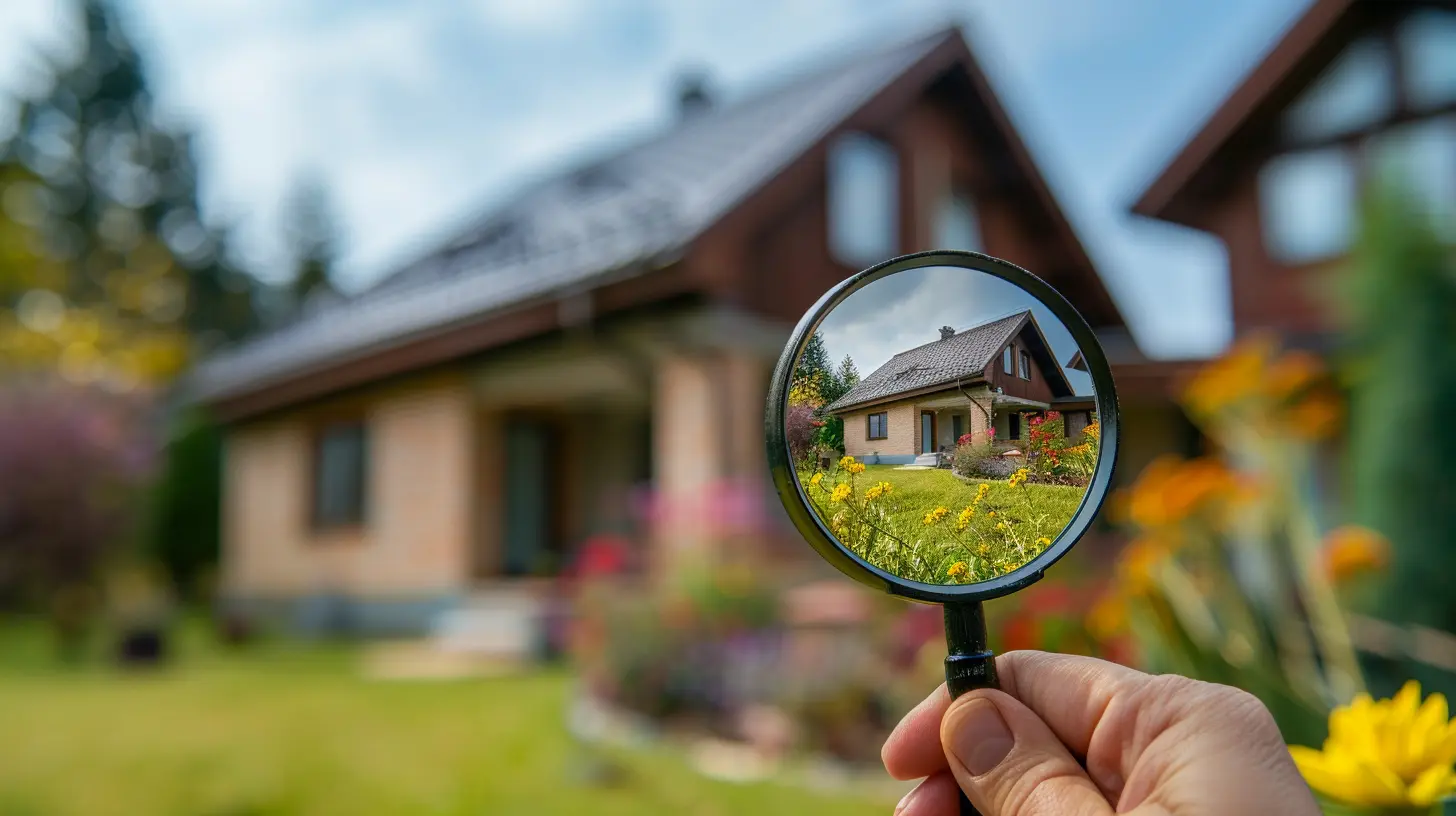Breaking Down Home Inspections for Buyers
29 September 2025
Buying a home is one of the biggest financial decisions you'll ever make. It’s exciting, nerve-wracking, and, let’s be honest, a little overwhelming. Between securing financing, negotiating offers, and signing endless paperwork, there’s one step that can feel like a major hurdle—home inspections.
A home inspection is like a doctor's check-up for your potential new home. It helps uncover hidden issues that could cost you thousands down the road. But what exactly happens in a home inspection? How should you prepare? And most importantly, what should you do with the findings?
Let’s break it all down so you can approach your home inspection with confidence. 
What Is a Home Inspection?
A home inspection is a thorough evaluation of a property's condition, typically conducted by a certified inspector. Their job is to assess the home’s structure, systems, and safety features, giving you an unbiased report on any potential problems before you finalize your purchase.Think of it as a reality check before you commit. The house might look perfect on the surface, but an inspection reveals what’s happening behind the walls, under the floors, and even in the attic. 
Why Home Inspections Matter
Would you buy a car without checking under the hood? Probably not. The same logic applies to homes. A home inspection can save you from unexpected surprises like leaking roofs, faulty wiring, or a sinking foundation.Some key reasons why inspections are crucial include:
- Avoiding Costly Repairs: Uncover hidden defects before you sign on the dotted line.
- Negotiating Power: Use the findings to renegotiate the price or request repairs.
- Peace of Mind: Know exactly what you're getting into before committing.
- Safety Assurance: Detect potential hazards like mold, radon, or faulty electrical systems.
Skipping an inspection might save a few hundred bucks upfront, but it could cost tens of thousands later. 
What Does a Home Inspection Cover?
A home inspection examines a house's major systems and components. Here’s what inspectors typically check:1. Structural Components
- Foundation condition (cracks, shifting)- Walls, ceilings, and floors (signs of water damage, uneven surfaces)
- Roof and attic (leaks, missing shingles, ventilation)
2. Exterior
- Siding, paint, and exterior walls- Driveways, walkways, and grading (drainage issues)
- Windows and doors (proper sealing, damage)
3. Plumbing System
- Water pressure and drainage- Leaks, pipe condition, and fixtures
- Water heater functionality
4. Electrical System
- Wiring and circuit breakers- Outlets and switches
- Smoke and carbon monoxide detectors
5. HVAC System (Heating, Ventilation, and Air Conditioning)
- Furnace and air conditioning operation- Filters, ductwork, and insulation
- Overall energy efficiency
6. Interior Components
- Walls, ceilings, and floors- Stairs and railings
- Appliances (if included in the sale)
7. Basement and Crawlspace
- Moisture or mold issues- Structural support
- Proper ventilation
8. Attic and Insulation
- Proper insulation to maintain energy efficiency- Roof leaks or improper ventilation
- Presence of pests or rodents
Inspectors don’t look at cosmetic issues unless they hint at deeper structural concerns. Scratched floors? Not a big deal. A sagging ceiling? That’s a red flag. 
The Home Inspection Process
Knowing what to expect can make the home inspection process a lot less stressful. Here's a step-by-step breakdown:Step 1: Hire a Qualified Home Inspector
Not all inspectors are created equal. Look for a certified professional from a reputable association, such as:- American Society of Home Inspectors (ASHI)
- National Association of Home Inspectors (NAHI)
- International Association of Certified Home Inspectors (InterNACHI)
Check online reviews, ask for credentials, and if possible, get recommendations from your real estate agent or friends who’ve recently bought homes.
Step 2: Schedule the Inspection
Most home inspections take between 2-4 hours, depending on the property’s size and condition. Try to schedule it during daylight hours so potential exterior issues are easier to spot.Step 3: Attend the Inspection (If Possible)
While it’s not required, attending the inspection is a great idea. You’ll gain firsthand insights into any problems and can ask questions along the way. Plus, seeing issues in real time helps you understand their seriousness better than reading about them in a report.Step 4: Review the Inspection Report
After the inspection, you’ll receive a detailed report outlining the findings. Some issues will be minor (a loose tile, chipped paint), while others could be deal-breakers (a cracked foundation, major plumbing leaks).The report will typically include:
- Photos documenting concerns
- Descriptions of the issues found
- Inspector recommendations (repairs, further evaluations)
How to Handle the Results
So, you've got your inspection report—now what? Here are your options:1. Move Forward If There Are Only Minor Issues
No home is perfect. If the inspector only finds small issues—like a leaky faucet or missing caulking—there's no need to panic. These are easy fixes and shouldn’t derail your purchase.2. Negotiate Repairs or Price Adjustments
If the inspection uncovers major issues, you have bargaining power. You can:- Ask the seller to fix the problems before closing.
- Request a price reduction to cover future repairs.
- Negotiate a closing credit to handle the fixes yourself.
3. Walk Away If There Are Major Problems
Sometimes, an inspection reveals deal-breakers—like a damaged foundation, severe water damage, or a failing roof. If repairing the issues is too costly or risky, it might be best to walk away.Common Home Inspection Red Flags
While many issues are fixable, some should raise immediate concerns:- Foundation problems – Cracks, shifting, or sloping floors can signal serious structural damage.
- Roof damage – Leaks, missing shingles, or sagging areas can mean costly repairs.
- Mold or water damage – Signs of moisture could indicate plumbing leaks or poor drainage.
- Electrical hazards – Outdated wiring or overfused circuit breakers can be fire hazards.
- Faulty plumbing – Low water pressure, leaks, or old pipes may require expensive fixes.
If your inspector flags any of these, consult a specialist for further evaluation before deciding.
Final Thoughts
A home inspection isn’t just another box to check—it’s your safety net. It helps you make an informed decision, negotiate smartly, and avoid costly surprises after moving in.If you're in the process of buying a home, don’t rush through the inspection stage. Take your time, ask questions, and use the results to your advantage. After all, wouldn’t you rather know everything about your new home before committing?
Buying a house should be exciting, not stressful. With a solid home inspection, you’ll have the confidence to move forward—or the wisdom to walk away.
all images in this post were generated using AI tools
Category:
Buyers GuideAuthor:

Elsa McLaurin
Discussion
rate this article
1 comments
Ardent McGuffin
Great article! Home inspections can seem daunting, but your breakdown makes it so much easier for buyers. Thanks for offering such valuable insights to help navigate this important step!
October 4, 2025 at 4:37 AM

Elsa McLaurin
Thank you for your kind words! I'm glad the article helped simplify the home inspection process for buyers. Happy house hunting!


